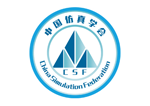Journal of System Simulation
Abstract
Abstract: The results of the algorithm ofunder-determined blind source separation RFID (Radio Frequency IDentification) system become worse or even lead to the degradation of overall system performancewith the large increase in the number of tags. Anovel parallelizable identification anti-collision algorithm based on constrained non negative matrix factorization (NMF) and Hamming weight grouping technology was proposed. The tag groupings were made by calculating the Hamming weight of the tag's front M bits, which were within the reader identification range. Each group was identified by the RFID reader according to the grouping sequence. Simulation results show that when the antenna number is 8~18, compared with the Jumping and Dynamic Searching algorithmunder the same antenna number, the improved algorithm tag identification rate increased by 42.8%~169.5%, the tag identification speed increased 40.3%~62.9%. It has very good practicability in the field of multi tag identification.
Recommended Citation
Jin, Yungang; Zhang, Xiaohong; and Wang, Qiuli
(2020)
"Under-determined Blind Source Separation Anti-collision Algorithm for RFID Based on Hamming Weight Grouping,"
Journal of System Simulation: Vol. 29:
Iss.
7, Article 16.
DOI: 10.16182/j.issn1004731x.joss.201707016
Available at:
https://dc-china-simulation.researchcommons.org/journal/vol29/iss7/16
First Page
1514
DOI Link
https://doi.org/10.16182/j.issn1004731x.joss.201707016
Last Page
1520
CLC
TN911.23
Recommended Citation
Jin Yungang, Zhang Xiaohong, Wang Qiuli. Under-determined Blind Source Separation Anti-collision Algorithm for RFID Based on Hamming Weight Grouping[J]. Journal of System Simulation, 2017, 29(7): 1514-1520.
DOI
10.16182/j.issn1004731x.joss.201707016
Included in
Artificial Intelligence and Robotics Commons, Computer Engineering Commons, Numerical Analysis and Scientific Computing Commons, Operations Research, Systems Engineering and Industrial Engineering Commons, Systems Science Commons

